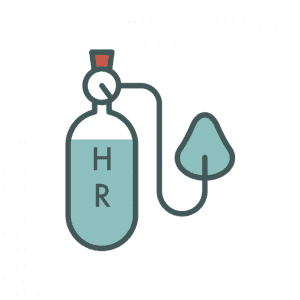For any of you that missed it, there was yet another extension to the Job Retention Scheme announced on the 18th December, so the scheme will now run until 30th April 2021. Just in case you missed this news or want a refresher on all the latest Furlough news and rules, here’s our latest update and FAQ’s courtesy of Crosslands Solicitors.
Only those employees (widely defined) employed on 30 October 2020, provided that an RTI submission had been made in respect of them between 20 March 2020 and 30 October 2020 are eligible to join the scheme. Employees who have left employment since 23 September 2020 can be taken back and furloughed.
Employees cannot be furloughed from 1 December 2020 if they are serving any kind of notice – even if they have resigned or are retiring.
Employees cannot be forced to take holiday over Christmas and then furloughed for that period, even if it is anticipated as a quieter time for business.
The extended scheme still allows ‘full’ furloughing of employees but also provides flexibility to agree with employees to work part time for any period of time and still claim under the scheme for unworked hours. The government will contribute 80% of wages capped at £2,500 per month but the employer must pay employer national insurance (13.8%) and employer pension contributions unless the employee opts out.
From February 2021 HMRC will publish the names of employers who have made claims and their approximate value from 1 December 2020 with a mechanism to apply not to be on the list if there has been a threat made against the employer.
Claims from 1 November 2020 must be submitted by 11.59pm 14 calendar days after the month you’re claiming for. If this time falls on the weekend then claims should be submitted on the next working day. Amendments must be made within 28 days of the claim being submitted.
It is important to remember that the HMRC guidance is just that – guidance. However, the directions issued by the Treasury appear to have some form of statutory authority although the nature of this is unclear.
Q: What are the basics of the CJRS?
A: These are the basics:
- An employee must have been employed on or before 30 October 2020 and an RTI submission had been made in respect of them between 20 March 2020 and 30 October 2020.
- An employee can either be fully furloughed or can be asked to work some hours and furloughed for the unworked hours. For hours worked the employee must be paid their normal wages.
- Employees must be notified in writing that they have been furloughed and to claim from 1 November this notification must have been made by 13 November 2020.
- Furloughing can be for any period, but the employer can only submit a claim on a weekly basis.
- The employee cannot do any work for the employer when on furlough (either fully furloughed or during unworked hours) but can volunteer for another organisation or work for someone else if contractually allowed.
- The employee can do training when furloughed provided they receive minimum wage when doing so.
- An employer can claim 80% of wages up to a maximum of £2,500 per month per furloughed employee but must pay employers’ NICs and 3% employer pension contributions. They can top up if they choose to do so.
- The furlough agreement with the employee must be kept for five years and records of the amount claimed/claim period/calculations/usual hours worked and actual hours worked must be kept for six years.
- For those on flexible furlough, hours taken as holiday count as furloughed hours and not working hours.
- Those who are clinically extremely vulnerable or high risk according to Public Health England and who cannot work from home can be furloughed but this no longer extends to those living in the same household.
- Those with caring responsibilities such as children sent home from school or the vulnerable can be furloughed.
- Women returning from maternity leave must give eight weeks’ notice and cannot be furloughed during that eight-week period.
- From 1 December no employee can be claimed for if they are serving any kind of notice including resignation or retirement.
Q: What can an employer claim?
A: An employer can apply for a grant of 80% of an employee’s wages (see below) capped at £2,500 per month (prorated when working some hours) all of which must be paid to the employee.
If the employer has entered into a flexible furlough arrangement then they can claim for those hours not worked, subject to the above restrictions. So if an employee works half of their contracted hours the maximum an employer can claim is £1,250 a month.
Q: Who can an employer claim for?
A: Employees (which is widely defined, see below) who were:
- hired before 30 October 2020 and
- which were notified to HMRC on an RTI (Real Time Information) submission between 20 March 2020 and 30 October 2020
- or who left after 23 September 2020 but have been rehired
- TUPE situations where employees transferred on or after 1 September 2020
Q: Which employers qualify for the CJRS?
A: All employers with a UK bank account and UK PAYE schemes can claim the grant. You do not need to have previously claimed for an employee before the 30 October 2020 to claim for periods from 1 November 2020. The scheme is for employers who cannot maintain their workforce because their operations have been affected by coronavirus although HMRC accepts that it affects different employees in different ways.
Q: Who can be furloughed?
A: Employees, directors and workers, including supply teachers who can be claimed for during school holidays.
Company directors who are furloughed can only undertake work that they are obligated to do by an Act of Parliament in relation to the filing of their accounts or the provision of information in relation to the administration of the company, they can pay their employees and make a claim under the CJRS.
It is possible to still be a pension trustee and be furloughed providing they are not an independent trustee or an organisation whose business is supplying pension trustees. An employee can also act as an elected or a trade union representative provided they do not provide services to the employer.
Q: Is there a minimum period of furlough?
A: No, employers can place an employee on flexible furlough for any period of time – from them doing no work at all through to them working a small proportion of their contracted hours for any period of time – so they can work part time hours/shifts and the employer can still claim a grant under the CJRS for the part of their normal contractual hours that they don’t work. There is a minimum claim period of seven days.
Q: What is covered under ‘wages’ and does this include overtime or commission?
A: For employees whose pay does not vary, this is their ‘regular’ salary before tax including non-discretionary fees, commission payments and overtime in their last pay period. This is the last pay period ending on or before 19 March 2020 for employees who either:
- were on your payroll on 19 March 2020, that is you made a payment of earnings to them in the tax year 2019 to 2020 which was reported to HMRC on a Real Time Information (RTI) Full Payment Submission (FPS) on or before 19 March 2020
- you made a valid CJRS claim for in a claim period ending any time on or before 31 October 2020
For all other employees, the reference period is the last pay period ending on or before 30 October 2020; this will only apply for periods starting after 1 November 2020.
For those whose pay varies it is the earnings in the same pay period in the previous year; or the average earnings in the 2019-20 tax year (or fewer if they have worked for less time than this, including a part-month calculation if they were taken in February) whichever is the higher.
This will be subject to deductions for income tax and employee NICs in the usual way.
In its guide to calculating the grant HMRC says that employers will not be penalised for using the wrong method of calculation provided there is ‘a reasonable choice of approach’.
HMRC are calculating this based on calendar days and not working days and gives worked examples as to how to calculate the claim.
There is guidance giving many more examples of how to calculate the claim.
Q: When can we claim?
A: There are minimum claim periods of 7 days. This does not mean there is a minimum period of furlough – employers can furlough for any period and any hours. The maximum claim periods are calendar months and claims and amendments must be made to a strict timetable (although HMRC says it will consider an extension of both dates in special circumstances):
| November 2020 claims | Claim by 14 December | Amend by 29 December |
| December 2020 claims | Claim by 14 January 2021 | Amend by 28 January 2021 |
| January 2021 claim | Claim by 15 February 2021 | Amend by 1 March 2021 |
| February 2021 claim | Claim by 15 March 2021 | Amend by 29 March 2021 |
| March 2021 claim | Claim by 14 April 2021 | Amend by 28 April 2021 |
| April 2021 claim | Claim by 14 May 2021 | Amend by 28 May 2021 |
HMRC guidance states that the following examples may amount to a reasonable excuse for missing the deadline:
- your partner or another close relative died shortly before the claim deadline
- you had an unexpected stay in hospital that prevented you from dealing with your claim
- you had a serious or life-threatening illness, including COVID-19-related illnesses, which prevented you from making your claim (and no one else could claim for you)
- a period of self-isolation prevented you from making your claim (and no one else could make the claim for you)
- your computer or software failed just before or while you were preparing your online claim
- service issues with HMRC online services prevented you from making your claim
- a fire, flood or theft prevented you them from making your claim
- postal delays that you could not have predicted prevented you from making your claim
- delays related to a disability you have prevented you from making your claim
- a HMRC error prevented you from making your claim
Q: What evidence of furlough is needed?
A: The employer must confirm in writing to the employee the furlough arrangements and if the employee is returning to do some work, the agreement for them to return to work some hours/shifts/days and the employer will be responsible for paying them their normal wages for the time worked and then claiming a prorated amount under the CJRS for the days not worked. They must keep written records of hours worked for six years.
A collective agreement reached between the employer and the trade union is sufficient evidence for a claim.
It must be remembered however that reference to agreement in the guidance is only in respect of an ability to claim under the scheme. If an employee’s wages have been reduced and there is no lay off/short-time working clause in the contract, then failure to obtain written consent may lead to claims for breach of contract or unlawful deduction from wages.
Q: What about employees on fixed-term contracts?
A: Fixed-term employees can be furloughed and their contracts can be renewed or extended during the furlough period. If the employee’s fixed term contract expired after 23 September, they can be re-employed and claimed for as long as the other relevant eligibility criteria are met.
Q: Can employees employed by individuals be furloughed?
A: Provided that they were paid through PAYE and were employed on the relevant dates as above then they can. This can apply to nannies, gardeners, etc.
Q: Do I have to furlough all my staff?
A: No, the decision to furlough is yours alone, provided that this is not discriminatory.
Q: Do employers have to top up the 80% to 100%?
A: No. The employer must pay the employee the grant it receives under the scheme (less normal deductions) but they do not have to top it up, although employers may want to.
Q: Do employers still have to pay 13.8% NICs?
A: Yes.
Q: Do employers still have to make pension contributions?
A: Yes, although they may agree with the employee to have a pension break so that the employee is not making their contribution and neither is the employer.
Q: What if the employee has sacrificed salary for a benefit?
A: HMRC has confirmed that it regards the current crisis as a ‘life event’ and will allow employers and employees to agree to reverse these agreements provided this is done in accordance with their contract. However, subject to further guidance being given, then unless HMRC will allow any salary sacrifice to be backdated, the employer will only be able to recover 80% of the reduced salary before the sacrifice was reversed. HMRC has updated its salary sacrifice guidance.
Q: What if the 80% brings the employee down below the minimum wage?
A: If they are not carrying out work for the employer then this is not a problem. However, if the employee is carrying out training for the employer whilst furloughed then they must receive minimum wage. If an employee is brought back to work flexibly they must be paid their normal hourly/daily rate for the time they do training in working time.
Q: Can the employee work for someone else whilst furloughed?
A: Employees can volunteer whilst they are furloughed but not for their employer either directly or indirectly or for any linked or associated organisation. The employer can try and find employees volunteer or new work with other organisations provided it is in line with public health guidance. HMRC has confirmed that provided the employee is contractually able to work for someone else they can. Most contracts will not allow this unless the consent of the employer is given so it will be a decision for each employer. However, all employers taking on new staff must complete a new starter checklist and Statement C must be completed to say if the employee has another job.
Q: Can the employee do training whilst furloughed?
A: Yes they can and must be paid the minimum wage when training during non-working hours and normal wages if training during working hours.
Q: Can we furlough employees multiple times?
A: Yes.
Q: Do we need the employee’s agreement to furlough?
A: Yes unless you have a clause in the contract which allows you to send home employees without pay if you do not have enough work. These are called ‘lay off’ clauses and are generally only found in employment contracts in industries such as manufacturing where they have peaks and troughs.
Q: What if the employee does not agree to be furloughed?
A: If the employee does not agree then if necessary, you will have to proceed with a redundancy process if that is your only option, obviously considering all alternatives to redundancy before making a final decision. Remember that if there are 20 or more employees in one establishment then it is important to go through collective consultation which means consulting with a union or elected representatives if there is no union for a 30-day period (20-99 employees) or 45-day period (100 or more) and filing an HR1 form (failure to do this is a criminal offence).
Q: Can the employee still do some work for us?
A: Employees will be able to return to work part time on whatever hours or shifts are agreed with their employer. The employer will be responsible for paying the employee their normal wages for the week and reclaiming from HMRC under the scheme for the hours/shifts not worked in the week (up to the cap). These agreed changes should be in writing and notified to the employee by the employer.
Q: If we have a lay-off clause in our contract do we have to seek agreement to furlough employees?
A: As you have a contractual term allowing you to send them home or pay them less then there is no question of a breach of contract or unlawful deductions claim and so although you do not need to get their consent you will still have to write to them telling them they have been furloughed and setting out the terms and conditions of them staying away.
Q: Do we have to have started a redundancy process to be able to claim?
A: No. The scheme is about trying to keep employees in employment.
Q: Can we furlough those employees who are clinically extremely vulnerable?
A: The guidance makes clear that those who are clinically extremely vulnerable or at high risk in line with Public Health England guidance who cannot work from home can be furloughed. However, this does not now extend to those living with them.
Q: Can we furlough those who are off sick?
A: Furloughing is not to be used for short-term absences for sick leave. Employers can decide whether to furlough those on long term sick. If a furloughed employee becomes ill, then it is up to the employer whether they place them on SSP or leave them as furloughed. As it is likely that most employees will be much better off as furloughed it is difficult to see a situation when employees would do so.
Q: What about my employee who has to be away from work because they have caring responsibilities including their children who are off school or the vulnerable?
A: Yes, these employees may be furloughed although there is no obligation to do so. However, this does not include those living in the same household as those who are clinically extremely vulnerable.
Q: We have employees on unpaid leave – can we furlough them?
A: No.
Q: Can a foreign national be furloughed?
A: Yes, as the scheme is not considered to be ‘access to public funds’ and employees on all types of visa can be furloughed.
Q: Can an apprentice be furloughed?
A: Yes they can and they can continue to train provided that they are paid minimum wage while they are training. This means that the employer might have to top up the 80% for periods of training. Guidance on apprentices has been issued and can be found here.
Q: What about student loans and the apprenticeship levy?
A: These must be deducted in the usual way.
Q: If an employee has two jobs can they be furloughed from both?
A: Yes. Equally they can be furloughed from one and not the other. It depends on the needs of the different businesses. However, if a worker has multiple employers but only works for one at a time, if a worker is laid off from the current employer, they cannot go to a previous employer to be furloughed.
Q: Can we ask employees to take holiday during furloughing?
A: Holiday will accrue during furlough and can be taken and an employer can force an employee to take holiday during a furlough period. However, hours taken as holiday count as furloughed hours and not working hours. Employees should not be furloughed specifically because they are on holiday and this is specifically referred to in relation to Christmas where employers should not furlough employees already taking holiday, even if it is likely to be a quieter period for the business.
Although legislation was introduced to allow employees to carry over holiday for up to two years if they have been prevented from taking it due to the pandemic, the guidance makes it clear that those on furlough are expected to take their holiday unless their employer cannot afford to pay them their full wages because of their financial situation.
Those on sick leave and maternity/adoption/shared parental/paternity leave cannot be asked to take holiday.
Q: How much should an employee be paid on holiday?
A: Employees must receive their normal pay when on holiday which can include overtime and commission provided it is regular and averaged out over the previous 12 months (from 6 April 2020). However, this is only for the 20 days of ‘European’ holiday and not for the additional 8 days for full-time workers which is a statutory requirement in the UK, or the additional contractual days over 28 given in employees’ contracts. Therefore employers with employees who earn significant commission may want to specify that the holiday is used up in a certain order so that the surplus over the 20 days ‘European’ holiday is used up first and commission does not have to be paid and then the 20 days ‘European holiday’ when it does.
In relation to pay for bank holidays, check contracts to see exactly how holiday is expressed and whether it is just 28 days or 28 days plus bank and public holidays or inclusive of them.
Q: How do we select those to be furloughed?
A: If you have a group of employees who would all qualify to be furloughed who all do the same job and only need half of them, then you will have to apply fair and objective selection criteria in deciding who stays and who is furloughed. This would have to be carried out quickly and probably based on what skills you will need in the short term. So, for instance, if you need some of the sales force you are going to select your best sellers to stay as they have the best chance of making sales. Bear in mind that decisions must not be discriminatory.
Q: When making this selection, can we consider individual circumstances such as the ability to work from home?
A: This would be a reasonable consideration but do not make stereotypical assumptions, e.g. all women with children cannot work from home as this may end up in a discrimination claim.
Q: Can we bring employees back temporarily off furlough and then furlough them again if we are not busy?
A: Yes.
Q: If we go ahead and make an employee redundant anyway, without considering furloughing, is this likely to be an unfair dismissal?
A: Unions have issued a statement making it clear that they will regard any failure to use CJRS as being unreasonable. However, as the scheme is not cost neutral to an employer then any such claim is likely to be weaker now than when it was cost neutral to an employer.
Q: What about employees on statutory family leave such as maternity / adoption / paternity / shared parental leave?
A: The government has confirmed that as before, it will bring in legislation to ensure that statutory family leave is paid based on normal rates of pay and not furlough rates.
If the employer pays contractual maternity pay which enhances statutory maternity pay, then the employer can claim back 80% of the enhancement (capped at £2,500 per month) under the CJRS but not 80% of the statutory maternity pay element as this can already be claimed back from the government.
If the employer does not pay enhanced maternity leave but tries to furlough an employee on maternity leave on 80% of her normal wages, this will bring her maternity leave to an end. Therefore, there is little point furloughing a woman on maternity leave if she is only receiving statutory maternity pay. It is not currently possible to pay less than the statutory minimum for statutory maternity pay.
The guidance now specifically says that if a woman wants to return from maternity leave early she must give eight weeks’ notice to do so and cannot go on the scheme for eight weeks.
When an employee returns from statutory leave then their normal salary should be the one used to calculate their furlough leave, not the salary whilst on statutory leave.
Q: Can we make employees who are furloughed redundant?
A: There is nothing to prevent an employee being made redundant whilst on furlough as a business may conclude that it will not recover or not recover within the timescales of the CJRS, but the guidance warns that ‘grants cannot be used to substitute redundancy payments’. Redundancy must, by law, be calculated according to normal pay and not furlough pay. From 1 December 2020, employers cannot claim for employees when they are on statutory or contractual notice including resignation or retirement. For the period from 1-30 November 2020 there is a discrepancy in the guidance as the employer’s guide says that employees serving statutory notice can be claimed for and the employee guide says those serving statutory and contractual guidance can be claimed for. The Treasury Direction is silent on the point. .
Q: What if the employee has two jobs?
A: They can be furloughed from both jobs and the cap applies to both. Or the employee can be furloughed from one and not the other.
Q: If we are making 20 or more employees redundant in a 90-day period at one establishment, could we rely on the ‘special circumstances’ argument so that we did not have to collectively consult?
A: Based on current case law it is highly unlikely that any such argument would be successful, but the country has never before faced such a crisis as this and therefore it may be successful if argued now – see Covid-19 and collective redundancy consultation.
Q: What should be in a furloughing agreement?
A: A furlough agreement should include:
- The employee’s agreement to be furloughed.
- Confirmation of when that starts or started and that the employer may bring them back off furlough for periods of time and then re-furlough them.
- If they have been made redundant then agreement that the redundancy has been withdrawn or the termination date varied and whether you require repayment of any redundancy payments or pay in lieu of notice which has already been made.
- Confirmation of how the employer can bring the furlough leave to an end.
- Confirmation that when not working the employee will not be required or allowed to carry out any work directly or indirectly for the employer or any connected or associated business during the furlough period other than volunteering for third parties or training. If they are doing training they must receive the minimum wage.
- Confirmation as to whether you will allow them to work for others during a furlough period –consider restrictions on this such as not working for a competitor.
- What the employee will be paid and, if relevant, agreement by the employee to accept less than their contractual pay (less income tax and NICs).
- If applicable, agreement that they may be asked to take statutory and contractual holiday entitlement during the furlough period (see above).
- If there are any applicable statutory rights, e.g. maternity, shared parental or adoption leave and pay, confirmation that these will continue and if they were receiving enhanced contractual payments, agreement to reduce these to 80% of their contractual level, capped at £2,500 per month.
- Asking the employee to ensure that the employer has up-to-date contact details for the employee and asking the employee to remain contactable.
- Reserving the right for the employer to make unilateral changes to the scheme and telling them how any such changes will be advised to them.
- Confirmation that all other express and implied terms of the contract of employment remain in force so remember to check if there are other terms that need to be varied.
Q: What do we need to make a CJRS claim?
A: You will need the following:
- your ePAYE reference number
- the number of employees being furloughed
- National insurance and names of employees being furloughed
- the payroll reference number of those being furloughed
- your self-assessment or corporation tax unique taxpayer reference or company registration number
- the claim period (start and end date)
- amount claimed
- your bank account number and sort code
- your contact name
- your phone number
For those who are flexibly furloughed you will also need to provide:
- the number of usual hours your employee would usually work in the claim period
- the number of hours your employee has or will work in the claim period
- you will also need to keep a record of the number of furloughed hours your employee has been furloughed in the claim period
Q: What details will HMRC publish?
A: From February 2021, HMRC will publish information about employers who claim for periods starting on or after 1 December 2020. It will be published each month, after the deadline for making amendments to claims. It will include the employer name, an indication of the value of the claim within a banded range, and the company number for companies and LLPs. The banded ranges are:
- £1 to £10,000
- £10,001 to £25,000
- £25,001 to £50,000
- £50,001 to 100,000
- £100,001 to £250,000
- £250,001 to £500,000
- £500,001 to £1,000,000
- £1,000,001 to – £2,500,000
- £2,500,001 to £5,000,000
- £5,000,001 to £10,000,000
- £10,000,001 to £25,000,000
- £25,000,001 to £50,000,000
- £50,000,001 to £100,000,000
- £100,000,001 and above
HMRC will consider applications not to publish this information if an employer can show that publicising these would result in a serious risk of violence or intimidation to certain individuals, or any individual living with them. Those individuals include:
- employers that are individuals – the employer themselves, or any employee of the employer
- employers that are companies – a director, officer or employee of that company
- employers that are partnerships – a partner, officer or employee of that partnership
- employers that are LLPs – a member or employee of that LLP
- trustees of a trust – a settlor, trustee or beneficiary of the trust
Evidence of this perceived threat could include:
- a police incident number if you’ve been threatened or attacked
- documentary evidence of a threat or attack, such as photos or recordings
- evidence of possible disruption or targeting
Q: Can we still claim a CJRS Bonus in respect of furloughed employees?
A: No, this scheme has been formally withdrawn given the extended furlough scheme.





















